King’s alumni are among the journalists providing us all with the critical information, images and commentary we need during this pandemic
Stephen Maher, BA’88, was working remotely in Florida while fixing up a sailboat there when the Coronavirus started creeping across North America this winter.
Maher, an award-winning journalist and contributing editor at Maclean’s Magazine, was researching the Coronavirus and talking to epidemiologists for a March 12 Maclean’s article he was writing called “Cancelling Your March Break.” What he was learning about the virus’s spread and hearing from public health officials and medical specialists wasn’t squaring with what he was observing first-hand in Punta Gorda, on Florida’s Gulf Coast. People there were still going to the beaches and bars, and acting as if nothing had changed.
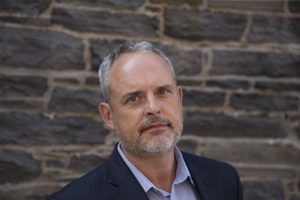
Maclean’s writer Stephen Maher
“I could hear the Baby Boomer dad bands rocking past midnight as I lay on my boat, trying to sleep, fretting about the virus,” he wrote in an article Maclean’s published on March 24, 2020, called Escape from Florida: My 2,400-km drive back to the sanity of Canada. The article is critical of Florida’s and the U. S.’s sluggish response to COVID-19, and the tribal epistemology that has people either in the ‘Trump tribe’ or outside it. “It’s so dangerous for Trump to politicize this issue in the way he has. People pick sides,” says Maher. “People react to events based on tribal identification instead of cool identification of the facts.”
Maher decided to abandon his boat repairs and hightail it back to Canada, which he felt was taking a more prudent and de-politicized approach to girding the country for the incoming pandemic’s sweep. What he had learned about contamination made him reluctant to enter an airport or board a plane, so he rented a car and began the three-day drive back to Ottawa. During that long ride, he began mentally composing the article that would describe his ‘escape.’ He decided to tell it in first person, making himself a character in Escape from Florida and introducing us to Floridians like Ron (not his real name), who couldn’t grasp the seriousness of the virus. Maher describes one of his conversations with Ron going like this: “Our government is telling us to come home,” I (Maher) said. “And you do what your government tells you, not like us,” he (Ron) joked.
The article has since been shared widely both in Canada and the U. S. , garnering Maher both fans and foes.
“Overwhelming,” is how Maher describes reaction to the article. “[I got] A great number of messages from people saying ‘that’s like our experience’ … [and] people also responding to the ideas of social solidarity and social trust. I think that’s good. I’m also getting a steady number of messages from people in Florida. People are unhappy with me. They don’t like it. They say, ‘Don’t come back here. You’re an idiot.’ That kind of thing.” Maher says people don’t have to like the article—but he does have to return to Florida one day to get his dry-docked boat.
Essential service
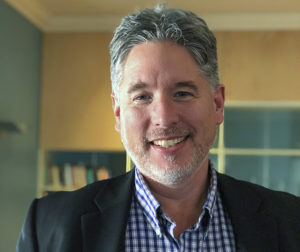
Prof. Tim Currie, Director of the King’s School of Journalism.
Journalism always plays a role in serving citizens in a democratic society, but in times of crisis, its role in giving people well-sourced and factual information is even more important than ever. It’s a point not lost on the Director of King’s Journalism School, Tim Currie, BJ’92.
“Interesting things are happening in the world of journalism right now,” says Currie. “The role of journalism [is] to give people the information they need in order to build strong, healthy societies. So if we understand how the virus is transmitted, and how evidence supports public health initiatives, we’re more likely to get through this as quickly as possible.”
Many jurisdictions in Canada and worldwide consider the media an essential service for the role they are playing in keeping the public informed during this COVID-19 crisis. This places journalists in the company of doctors, nurses, health-care support workers, those involved in medical and food supply chains, and public service workers such as police and the military. It also means journalists are permitted to leave their homes to report, although anyone watching television news will notice some changes. To comply with social distancing rules, journalists are interviewing sources at a minimum 2 metre-distance, often holding a microphone with boom poles or extension support arms.
Maher agrees journalism is an essential service and these special permissions are warranted. “I do believe the media play a vital role in times like this in helping people get information. That’s what we [journalists] spend our careers doing—trying to engage people and tell stories to them,” he says. Maher cites the interplay between public health officials, government and the media, and how journalists challenge public institutions and hold them to account. “Nothing could be clearer than [that] this is an important function.”
And it’s the reason many outlets have temporarily lifted their pay walls for news coverage of COVID-19. Classifying it as information people need to know in order to protect themselves and society, outlets including The New York Times, Washington Post, Globe and Mail, Toronto Star and Halifax Examiner are publishing on-line coverage that anyone can access without paying.
“Journalism costs money and we should try to support journalism where we can and pay for it,” says Currie, sensitive to the fact that news organizations across Canada are suffering major revenue declines right now. But he also recognizes the opportunity dropped pay walls present for journalism students and others facing financial hardships of their own. “If you can’t [afford to pay], it’s a great time to compare [coverage],” Currie says.
With so many businesses currently at a pandemic-induced standstill, advertising—media’s main revenue stream—has been reduced to a trickle. This has inflamed an already acute crisis in the journalism industry. In March, Saltwire Media laid off 240 employees—that’s 40 per cent of its workforce at its 35 weekly and daily papers in Atlantic Canada. There are similar layoffs and closures happening in media all across the country. This further deepens the problem of media sustainability that’s been decades in the making. The Local News Research Project says that between 2008 and April 1, 2020, 256 newspapers have closed affecting 175 communities, and only 45 new publications have emerged.
Kim Kierans, BA(Hons)’83, is a King’s journalism professor who was recently appointed to the Government of Canada’s new independent advisory board that’s evaluating whether journalistic and publishing organizations qualify for new tax measures. It’s part of a $595-million package announced in the 2019 federal budget intended to provide support for Canadian journalism organizations and to ensure the vitality of Canadian democracy.
“The role of journalism [is] to give people the information they need in order to build strong, healthy societies. So if we understand how the virus is transmitted, and how evidence supports public health initiatives, we’re more likely to get through this as quickly as possible.” —Tim Currie
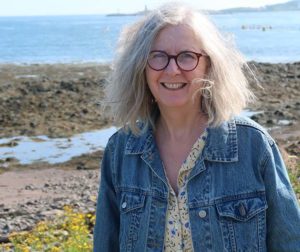
Journalism professor Kim Kierans.
The board will make recommendations to the CRA on whether a journalism organization meets certain criteria required for designation as a qualified Canadian journalism organization, which is the gateway to accessing the other income tax measures, including the Canadian journalism labour tax credit.
“The advisory board is committed to ensure the rigor and fairness of the process, and to protect the independence of newsrooms,” Kierans says. “As a former journalist and long-time journalism professor, history shows that robust journalism is essential to serving society and our democratic principles.”
‘A heavy load’
Julia-Simone Rutgers, BJ(Hons)’19, had just started a new, full-time job as General Assignment Reporter with the Winnipeg Free Press at the beginning of March 2020 when COVID-19 was starting to infiltrate the Canadian consciousness.
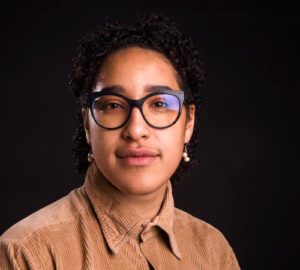
Julia-Simone Rutgers, reporter for the Winnipeg Free Press.
“I was aware it was a thing that had entered Canada but it didn’t raise alarms for me,” Rutgers said. After a year of gig work writing for newspapers like StarMetro Halifax and The Coast, she was excited to assume a salaried, permanent position and ready to embrace life in Manitoba. As it turned out, one of her first assignments was spending time in grocery stores and Costco to see if people were panic buying. Shortly after that, things changed drastically when the paper gave employees the choice to work from home as of March 16—an option Rutgers exercised.
“A lot of over-the-phone work and occasionally stepping out and taking the risks to make sure you’re talking to real people,” is how Rutgers describes her job since then. She’s written COVID-19 stories about health-care workers who lack protective gear, the strain on family courts during the pandemic, and even the comfort that teddy bears in Winnipeg windows offer children at this anxious time. She’s also had to take a 12 per cent pay cut.
“It’s really emotionally draining,” is how Rutgers describes covering COVID-19 every day. “A lot of people have been trying to cope with this by setting aside designated amounts of time for reading the news…but in this job you don’t get that option,” says Rutgers, who’s immersed in the news by virtue of working within it.
She feels as an empathetic person, she’s taken on a lot of the emotional weight the work carries. “There have been days I’ve woken up and thought ‘I can’t do this.’ But I put my nose down. It’s essential work, it’s an important service and I believe it’s a public service to give people the information they need. But it’s a heavy load.”
Powerful images
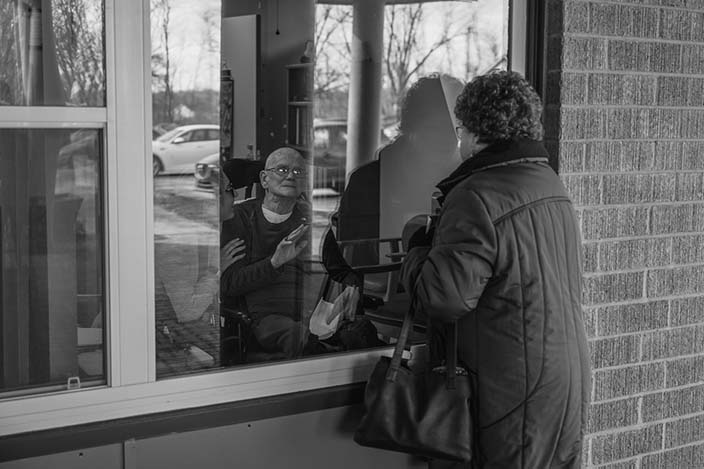
Photo credit: Darren Calabrese.
COVID-19 stories aren’t only being told through words.
King’s alumnus and photojournalist Darren Calabrese, BA’03, has been working on assignments related to COVID-19 coverage in the Globe and Mail. In March, he visited Dykeland Lodge, a long-term care home in Windsor, N. S., shortly after in-person visits, even by close family members, were banned. There, he met Stella Anthony, whose husband, Dougie Anthony, is a resident at Dykeland. Calabrese photographed Stella, 79, standing outside a main-floor office at Dykeland, as two care workers wheeled Dougie, who has unspecified dementia, up to the glass so they could visit through the window. Calabrese’s photos, seen accompanying this article, show the couple, who have been married for almost 60 years and normally visit three- to four-times a day, waving to one another from opposites sides of the glass. Online reaction to the photos include, “OMG that is beautiful and heartbreaking at the same time,” “60 years together and now separated by a thin sheet of plate glass…extremely touching…thanks for making these pics…” and “My eyes are leaking.”
Calabrese says he overhead Stella telling Dougie, ‘I love you and I miss you.’ “Oh boy. I had a lump in my throat for that one,” he says.
Back home
Like Calabrese and Rutgers, Maher is also working through some emotions brought on by his work related to COVID-19.
Once he arrived safely back in Ottawa, Maher went immediately into self-isolation like the rest of Canada. The following week, it was announced that the U. S. had the highest number of COVID-19 diagnoses in the world. “It’s all pretty depressing. It’s going to get worse, right? I have a queasy feeling of ‘oh look, I warned them.’ The worse the news gets the more I’m vindicated. I’m trying not to feel that way. It’s pretty awful,” says Maher.
Currie says it’s normal for journalists to feel the strain at times like these, but hopes they can find some comfort in knowing how important their work is now and what it’s doing to help flatten the curve.
“Journalism is the most important window to the world for many people right now—especially those who are struggling financially or mentally,” says Currie. “The information and context media outlets provide is crucial to their wellbeing and to the wellbeing of all of us. Journalists should know—and I think do know—how important that role is.”

